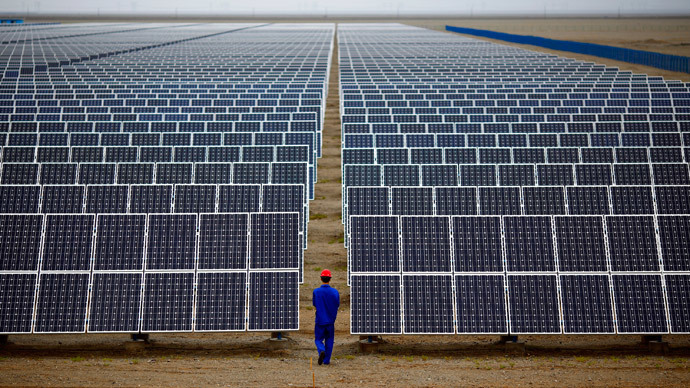Solar solution: MIT creates way to make salt water drinkable

With mandatory water restriction recently ordered for the first time in California, an MIT team has come up with an award-winning, cost-effective and environmentally-friendly method of turning salt water into drinking water using sustainable solar power.
The team from the Massachusetts Institute of Technology (MIT) has invented a system that works by using solar panels to charge a large bank of batteries. These power an electrodialysis machine and remove salt from the water, making it drinkable.
According to the Securing Water for Food agency, between 2000 and 2050 water demand is expected to increase 55 percent globally, meaning the number of people affected by water scarcity will continue to grow. By 2025, two-thirds of the world's population could be living in severe water stress conditions.
Major droughts threatens food supply, global security - @NASAhttp://t.co/RaiYbzt0KRpic.twitter.com/i8HCTnSokf
— RT (@RT_com) November 5, 2014
MIT researchers have been using the Brackish Groundwater National Desalination Research Facility in Alamogordo, New Mexico. According to Mary Beth Griggs at Popular Science, MIT's signature system can remove salt from 2,100 gallons (7,950 liters) in just 24 hours.
While solar-powered desalination plants are not new, and their potential in water-poor areas like Chile and California are currently being studied, the technology has so far been very expensive to run and therefore next to impossible for developing countries to use.
The system proposed by MIT is said to be different, however.
"Electrodialysis works by passing a stream of water between two electrodes with opposite charges. Because the salt dissolved in water consists of positive and negative ions, the electrodes pull the ions out of the water, leaving fresher water at the center of the flow. A series of membranes separate the freshwater stream from increasingly salty ones," David L. Chandler, of the MIT News Office, explained on the MIT Energy Initiative website.
READ MORE: California staves off water crisis with $1bn emergency drought relief
Mechanical engineer Amos Winter told Chandler that while both electrodialysis and reverse osmosis [a water purification technology that uses a semi-permeable membrane to remove larger particles from drinking water] require the use of membranes, those in an electrodialysis system are exposed to lower pressures and can be cleared of salt buildup simply by reversing the polarity. "That means the expensive membranes should last much longer and require less maintenance," he said.
What’s more, the MIT electrodialysis system recovers a much higher percentage of the water — over 90 percent — compared to only 40 or 60 percent from reverse-osmosis systems. That's definitely a "big advantage in areas where water is scarce," according to Chandler.
The MIT team has been testing their system out in several villages across India, which has 16 percent of the planet’s population but only 4 percent of its fresh water.
Last week MIT and Jain Irrigation Systems won the top $140,000 Desal Prize awarded to innovators who create cost-effective, energy efficient and environmentally-friendly desalination technologies that can provide potable water in developing countries.












